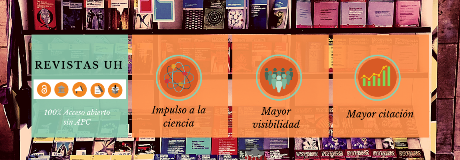Introduction to Ergonomics Applied to Industrial Design.
##plugins.themes.bootstrap3.article.main##
Abstract
Ergonomics (or Human Factors) is the scientific discipline that deals with the understanding of the interactions between humans, other elements of a system and the environment. The ergonomist applies theories, principles, data and methods of all sciences, with a holistic systemic approach, in order to optimize the design for human well-being and overall system performance. All industrialized nations today refer to Ergonomics as an indispensable "tool" for the design of any product and more than 100 ISO-EN ergonomic standards have been promulgated to which any product and production process must comply. The purpose of Ergonomics is to identify a user-oriented design and, to this end, to provide the designer with guidelines to proceed in compliance with the constraints imposed by the physical and psychophysiological characteristics of the human being.
##plugins.themes.bootstrap3.article.details##

This work is licensed under a Creative Commons Attribution-NonCommercial-ShareAlike 4.0 International License.
- Attribution — You must give appropriate credit , provide a link to the license, and indicate if changes were made . You may do so in any reasonable manner, but not in any way that suggests the licensor endorses you or your use.
- NonCommercial — You may not use the material for commercial purposes .
- No additional restrictions — You may not apply legal terms or technological measures that legally restrict others from doing anything the license permits.
- ShareAlike — If you remix, transform, or build upon the material, you must distribute your contribution under the same license as the original. NOTE: This point applies to numbers 1 to 20 of the magazine with the previous CC-BY-NC-SA 4.0 license. Does not apply to the new CC BY-NC 4.0 license from Volume 11, Number. 21 (2024).
References
A list of 111 ISO/EN/UNI Standards regarding Ergonomics. Published by “Società Italiana di
Ergonomia e Fattori Umani”, Milano, Italy.
http://www.societadiergonomia.it/approfondimento_norme/#norme
Alexander, D. and Rabourn, R. 2020. Applied Ergonomics. CRC Press, Boca Raton, USA.
ISBN 978-03-674-5523-1.
Arellano, J. L. H., Macías A. A. M., Martínez J. A. C. and Coronado P. P. 2018. Handbook of
Research on Ergonomics and Product Design. Engineering Science Reference, an
imprint of IGI Global, Hershey, Usa. ISBN 978-15-225-5234-5.
Bandini Buti, L. 2001. Ergonomia e prodotto, Il Sole 24 Ore, Milano, Italy. ISBN 978-88-324-
-X.
Grossi, F. C. 2006. L’imprenditore artigiano nella società digitale, dal modello
socioeconomico post-industriale all’artigianato del “villaggio globale”. CNA Cultura,
Udine, Italy.
Grossi, F. C. 2022. The Distinctive Features of Artisanal Design and Industrial Design.
A3manos, Revista de la Universidad Cubana de Diseño, Universidad de la Habana,
Cuba, n. 16 enero - junio 2022. Pages 13-16. ISSN 2412-5105.
Harrison , J. S., Barney , J. B, Freeman ,R. E. and Phillips , R. A. 2019. The Cambridge
Handbook od Stakeholder Theory, Cambridge University Press, Cambridge, U.K.
ISBN 978-11-081-2349-5.
Meister, D. and Enderwick T. P. 2001. Human Factors in System Design, Development, and
Testing. CRC Press, Boca Raton, USA. ISBN 978-08-058-3206-8.
Norman, D. A. 1988. The Design of Everyday Things. Basic Books, New York, USA, ISBN
-0-465-06710-7.
Salvendy G. and Karwowski W. 2021. Handbook of Human Factors and Ergonomics, Fifth
Edition. John Wiley & Sons, Inc., Hoboken, USA. ISBN 978-11-196-3608-3.
Stanton, N. A., Young M. S. and Harvey C. 2017. Guide to Methodology in Ergonomics:
Designing for Human Use, Second Edition. CRC Press, Boca Raton, USA, ISBN 978-
-384-3472-1.
























